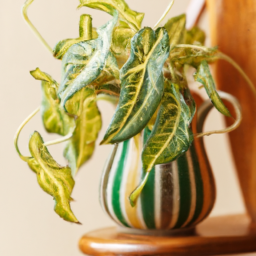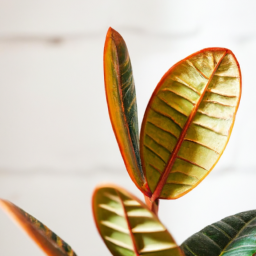
Are you a plant lover but also a pet owner? Finding the perfect balance between having a green oasis in your home and keeping your furry friends safe can sometimes be a challenge. In this blog post, we will explore the world of Indoor Plants Pet Friendly. We will discuss some of the best indoor plants that are safe for your pets to be around, as well as some tips on how to keep both your plants and pets happy and healthy in your home. So, if you’re looking to add some greenery to your space without worrying about your pets getting into trouble, keep reading to learn more!
Benefits of Having Pet-Friendly Indoor Plants
Improved Air Quality
Indoor plants are known for their ability to purify the air by removing toxins and producing oxygen through photosynthesis. Having pet-friendly indoor plants can help improve the air quality in your home, creating a healthier environment for both you and your furry friends. Plants such as spider plants, Boston ferns, and bamboo palms are not only safe for pets but also effective in filtering out pollutants like formaldehyde and benzene.
In addition to filtering out harmful substances, indoor plants can also help maintain the humidity levels in your home, which is beneficial for both you and your pets. Proper humidity levels can prevent dry skin and respiratory issues in pets, making them feel more comfortable and healthy overall.
Overall, having pet-friendly indoor plants can significantly improve the air quality in your home, creating a safer and healthier environment for both you and your beloved pets.
Reduced Stress and Anxiety
Studies have shown that indoor plants can have a calming effect on individuals, reducing stress and anxiety levels. The presence of greenery indoors can create a sense of tranquility and relaxation, which can be beneficial for both pet owners and their furry companions. Pets, especially dogs and cats, can also benefit from the calming effects of indoor plants, helping to reduce their anxiety and promote a sense of well-being.
In addition to their calming effects, pet-friendly indoor plants can also help create a more inviting and aesthetically pleasing space in your home. The natural beauty of plants can enhance the overall ambiance of a room, making it a more enjoyable and peaceful environment for both you and your pets to relax in.
Overall, having pet-friendly indoor plants can help reduce stress and anxiety levels in both pet owners and their furry friends, creating a more peaceful and harmonious living space for all.
Promotes Physical and Mental Well-being
In addition to improving air quality and reducing stress, pet-friendly indoor plants can also have a positive impact on physical and mental well-being. Taking care of indoor plants can be a fulfilling and rewarding experience, providing a sense of purpose and accomplishment for pet owners. The act of nurturing and tending to plants can promote mindfulness and relaxation, helping to reduce feelings of anxiety and depression.
Furthermore, having pet-friendly indoor plants can also encourage physical activity and movement, as pet owners may need to water, prune, and repot their plants regularly. This can help promote a more active lifestyle and improve overall physical health for both pet owners and their furry companions.
Overall, having pet-friendly indoor plants can promote physical and mental well-being, providing a sense of fulfillment and purpose while also encouraging a more active and healthy lifestyle for both pet owners and their beloved pets.

Top 10 Low-Maintenance Indoor Plants Safe for Pets
Choosing the Right Indoor Plants for Your Pet-Friendly Home
When it comes to selecting indoor plants for your home, it’s important to consider not only the aesthetic appeal but also the safety of your furry friends. Many common houseplants can be toxic to pets if ingested, so it’s crucial to choose plants that are safe for your four-legged companions. Fortunately, there are plenty of low-maintenance indoor plants that are not only pet-friendly but also easy to care for.
One of the first things to consider when choosing indoor plants for your pet-friendly home is the toxicity level of the plant. Some plants, such as lilies, philodendrons, and pothos, can be extremely toxic to pets if ingested. It’s best to avoid these plants altogether and opt for non-toxic alternatives. Some safe options include spider plants, Boston ferns, and parlor palms, which are all non-toxic to pets.
In addition to toxicity levels, it’s also important to consider the care requirements of indoor plants. Low-maintenance plants are ideal for pet owners who may not have a green thumb or who have busy schedules. Some pet-friendly indoor plants that are easy to care for include snake plants, peace lilies, and spider plants. These plants require minimal watering and can thrive in a variety of light conditions, making them perfect for pet-friendly homes.
Another factor to consider when choosing indoor plants for your pet-friendly home is the size of the plant. Some pets, especially cats, may be prone to nibbling on plants, so it’s best to choose larger plants that are out of reach of curious paws. Tall plants such as palm trees, rubber plants, and bird of paradise are great options for pet-friendly homes, as they are both safe for pets and can add a touch of greenery to your space.
Caring for Your Pet-Friendly Indoor Plants
Once you’ve selected the perfect pet-friendly indoor plants for your home, it’s important to properly care for them to ensure they thrive. One of the most important aspects of plant care is watering. Overwatering can be just as harmful to plants as underwatering, so it’s important to find the right balance. Most indoor plants prefer to dry out slightly between waterings, so be sure to check the soil moisture before watering.
In addition to watering, it’s important to provide your indoor plants with the right amount of light. While some plants thrive in bright, indirect light, others prefer low light conditions. Be sure to research the light requirements of each plant and place them in a suitable location in your home. If your pet-friendly indoor plants start to look droopy or discolored, it may be a sign that they are not receiving enough light.
Another important aspect of plant care is fertilizing. While some indoor plants may not require regular fertilizing, others may benefit from a boost of nutrients every few months. Be sure to use a pet-safe fertilizer to avoid any potential harm to your furry friends. Additionally, regularly dusting the leaves of your indoor plants can help them photosynthesize more efficiently and stay healthy.
Troubleshooting Common Issues with Pet-Friendly Indoor Plants
Even with proper care, pet-friendly indoor plants may still encounter issues from time to time. One common problem that pet owners may face is pets nibbling on plant leaves. If your furry friend is prone to chewing on plants, try placing bitter-tasting deterrents such as citrus peels or hot pepper flakes around the base of the plant to discourage them.
Another common issue with indoor plants is pests. Spider mites, aphids, and mealybugs are common pests that can infest indoor plants and cause damage. To prevent pests, regularly inspect your plants for any signs of infestation and treat them promptly with insecticidal soap or neem oil. Additionally, isolating any infested plants can help prevent the pests from spreading to other plants in your home.
Overwatering is another common issue that pet owners may encounter with indoor plants. If you notice that your plant’s leaves are turning yellow or brown and feel mushy to the touch, it may be a sign of overwatering. To remedy this issue, allow the soil to dry out completely before watering again and adjust your watering schedule accordingly.
In conclusion, choosing pet-friendly indoor plants for your home doesn’t have to be a daunting task. By considering factors such as toxicity levels, care requirements, and plant size, you can create a safe and beautiful environment for both your plants and your pets. With proper care and maintenance, your pet-friendly indoor plants can thrive and bring a touch of nature into your home.

How to Create a Safe Environment for Pets with Indoor Plants
Understanding the Importance of Pet-Friendly Indoor Plants
When it comes to creating a safe environment for your pets, indoor plants play a crucial role. Many common houseplants can be toxic to animals if ingested, so it’s important to choose pet-friendly options that won’t harm your furry friends. Not only do pet-friendly indoor plants help to purify the air in your home, but they also add a touch of greenery and beauty to your living space.
When selecting indoor plants that are safe for pets, it’s essential to consider the specific needs and behaviors of your animals. Some pets may be more prone to chewing on plants, while others may be attracted to certain smells or textures. By choosing the right pet-friendly indoor plants, you can create a harmonious environment that benefits both your pets and your home.
Choosing the Right Pet-Friendly Indoor Plants
When selecting indoor plants for your home, it’s important to choose varieties that are safe for pets. Some common pet-friendly indoor plants include spider plants, Boston ferns, and African violets. These plants are non-toxic to animals and can thrive in indoor environments with proper care.
It’s also essential to consider the placement of your indoor plants to ensure they are out of reach of curious pets. Hanging plants, shelves, or plant stands can help keep your plants safe from prying paws and mouths. Additionally, it’s a good idea to research any specific plant varieties you are considering to ensure they are safe for your particular pets.
Proper care and maintenance of your pet-friendly indoor plants are also crucial to their health and longevity. Make sure to water and fertilize your plants regularly, and keep an eye out for any signs of pests or disease. By providing the right environment for your plants, you can create a safe and healthy space for your pets to enjoy.
Tips for Creating a Pet-Friendly Indoor Plant Environment
In addition to choosing the right pet-friendly indoor plants, there are several other steps you can take to create a safe environment for your pets. One essential tip is to avoid using chemical pesticides or fertilizers on your plants, as these can be harmful to animals if ingested. Instead, opt for natural and pet-safe alternatives to keep your plants healthy and pest-free.
Another important consideration is to provide your pets with plenty of alternative chewing options to deter them from nibbling on your plants. Chew toys, treats, and other distractions can help redirect your pet’s attention away from your indoor plants. Additionally, keeping your plants well-maintained and free from dead leaves or debris can help prevent pets from ingesting potentially harmful materials.
Overall, creating a safe environment for pets with indoor plants requires careful consideration and planning. By choosing pet-friendly plant varieties, providing proper care and maintenance, and taking steps to prevent pets from accessing your plants, you can create a harmonious living space that benefits both your pets and your indoor plants.
Summary Snapshot
Are you a plant lover but also a pet owner? If so, you may have concerns about the safety of having indoor plants around your furry friends. The good news is that there are plenty of pet-friendly indoor plants that can coexist peacefully with your beloved animals. These plants not only add a touch of greenery to your home but also provide health benefits for both you and your pets.
Some popular pet-friendly indoor plants include spider plants, Boston ferns, and African violets. These plants are non-toxic to cats and dogs, making them a safe choice for pet owners. Just be sure to keep any toxic plants out of reach of your pets to prevent any accidents. With a little research and care, you can create a beautiful indoor garden that is safe for both your plants and your pets to enjoy.
Let me leave you with some FAQs:
Q1: Are there indoor plants that are safe for pets?
A1: Yes, there are several indoor plants that are safe for pets to have in your home. Some examples include spider plants, Boston ferns, and African violets.
Q2: How can I ensure that indoor plants are pet-friendly?
A2: To ensure that indoor plants are pet-friendly, you can check with your local nursery or do some research online to find out which plants are safe for pets. You can also place plants out of reach of your pets or use deterrents to keep them away.
Q3: Are there any indoor plants that are toxic to pets?
A3: Yes, there are some indoor plants that can be toxic to pets if ingested. Examples include lilies, aloe vera, and philodendron. It’s important to research plants before bringing them into your home if you have pets.
Q4: Can indoor plants help improve air quality for pets?
A4: Yes, indoor plants can help improve air quality for pets by filtering out toxins and producing oxygen. Some plants, like the spider plant and peace lily, are known for their air-purifying properties.
Q5: How should I care for indoor plants to keep them pet-friendly?
A5: To care for indoor plants and keep them pet-friendly, make sure to water them regularly, provide adequate sunlight, and avoid using chemical fertilizers or pesticides that could harm your pets. It’s also a good idea to regularly check for any signs of wilting or damage that could indicate a problem.
Dr. Olivia Green is a botanist with over two decades of experience in indoor plant cultivation. She holds a Ph.D. in Plant Biology and has dedicated her career to researching plant behavior in controlled environments. Dr. Green is passionate about helping plant enthusiasts master the art of indoor gardening through her extensive knowledge and practical insights.


